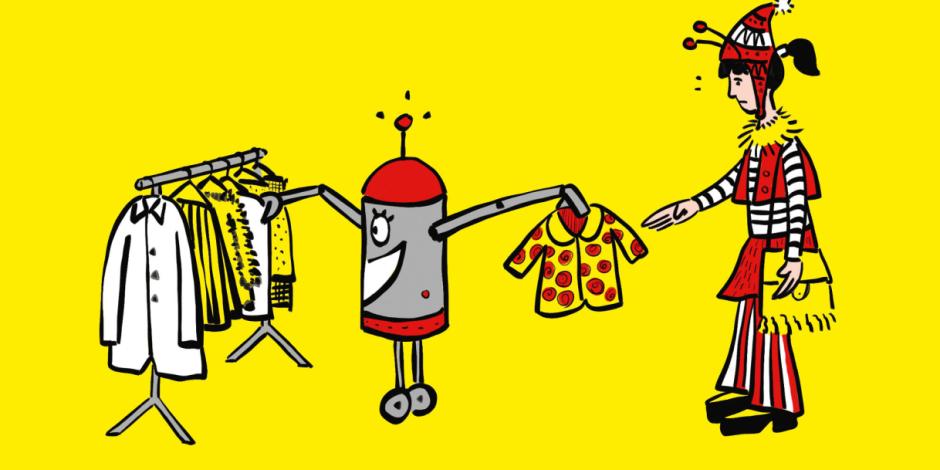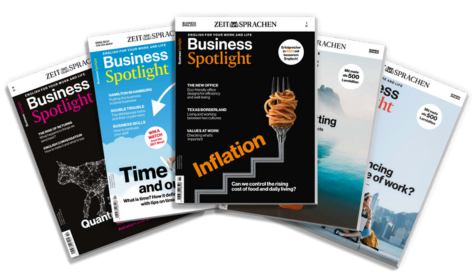When decisions have to be made, the stakesWetteinsätze; hier: Risikenstakes are often high. According to Forbes, almost three billionMilliarde(n)billion business decisions are made every year, and the management consulting company McKinsey has found that the average Fortune 500 company loses $250 million a year because of poor decision-making.
Now, companies are using what’s called decision intelligence (DI) to model the potential results of decisions, so that less is left to leave sth. to chanceetw. dem Zufall überlassenchance. We’ve become very good at collecting big data. DI can be seen as the next step — how to understand what all that data actually means for business. South African data scientist Cassie Kozyrkov, who was Google’s first chief decision scientist, is now head of the company Data Scientific. She told DataCamp: “Decision intelligence is the discipline of turning information into better action in any settingSituation, Umgebungsetting, at any scale.”
DI involves the use of artificial intelligence (AI), process automation and other technologies to help people at all levels make successful decisions — meaning you don’t have to be a data scientist to benefit from data. DI provides users with tools to design, model and track sth.etw. nachverfolgentrack their decisions. It makes recommendations and it can learn, both from human feedback as well as from the results of its own predictionVorhersagepredictions. The more you use DI, the better it gets.
Decision intelligence is turning information into better action
How can decision intelligence be used?
Many companies have started using DI, and it can be implemented across various industries so that decisions may be informed by relevant data, reducing the risk of bad choices.
- Retail: DI can be used to analyse patternMuster, Strukturpatterns in consumer demand and retailEinzelhandelretail trends, helping companies to optimize inventory managementBestandsverwaltunginventory management, processes and prices, while meeting the needs of specific demographic groups. Nike, for example, uses it to analyse customers’ behaviour (even on social media) to predict purchasing patternKaufverhaltenpurchasing patterns.
- Finance: Examining customers’ behaviour and predicting their needs helps banks to customize financial plans better. It can also help banks to detect sth.etw. aufspüren, aufdeckendetect fraudBetrugfraud, evaluate risk and follow regulations. Most major banks are already using some form of DI.
- Energy: Integrating renewable power into the overallGesamt-overall energy mix is complex and challenging. DI can support those processes and help manage resources better, improving efficiency and the security of supply.
- Telecommunications: DI helps companies to identify network problems and their causes, which speeds up solutions. It can also help providers to understand what consumers need, based on the actual use of their services.
- Health care: The quality of care can be improved by analysing processes in order, for example, to reduce waiting times and speed up the delivery of treatments.
Changing industries
unlikeanders alsUnlike most of the economy, the DI-services industry benefits from periods of uncertainty, as they are often when companies have the greatest need for change. Pandemics, wars and supply chainLieferkettesupply-chain problems all lead businesses to rethink the status quo.
Silico, a London-based business-process simulation company, saw the positive impactWirkungimpact that the Covid-19 pandemic had on its business, which was launch sth.etw. lancieren, (auf dem Markt) einführenlaunched in 2019. “Our first real use caseAnwendungsfalluse case was with the NHSstaatlicher britischer GesundheitsdienstNHS,” John Hill, Silico CEO (chief executive officer)Geschäftsführer(in)CEO, told Business Spotlight. “We did a lot of scenario planning and tried to simulate the impact of Covid on wait-list times for cancer treatment or doctors’ surgery (UK)hier: Praxissurgeries, and the knock-on effectFolgewirkungknock-on effects across the entire UK health-care system.”
The shortages of a wide range of materials and components, which began during the pandemic and got worse because of the war in Ukraine[wg. Aussprache]Ukraine, have forced many organizations to re-evaluate how pricing, costs and profit marginGewinnmargeprofit margins are likely to change in the foreseeable future.
“DI has built various scenario models and calculated the right price to buy at, when a premiumAufschlagpremium is appropriateangemessenappropriate, how high it would be and so on,” says Nitin Dsouza, head of global supply chain at the digital transformation consulting company Publicis Sapient. “It has also used shippinghier: Versandshipping and transport data to predict delays in delivery.”
Decisions should no longer happen in darkened rooms or be in the hands of whizzy analysts
Simulation models, which function like sophisticatedhochentwickelt, komplexsophisticated question-and-answer machines, allow users to enter different decisions and extract sth.etw. herausziehen; hier: gewinnenextract metricMessgrößemetrics that support the rationaleGrundüberlegung(en)rationale behind decisions. “At the end of the day, it’s humans who make decisions, and it’s humans who are accountablehier: rechenschaftspflichtigaccountable for them and have to explain them across an organization,” Hill explains. “If you want to expand a company and branch out into sth.hier: sich etw. erschließenbranch out into new markets, it’s very hard to say we are going to spend 100 million of investors’ money on expansion without being able to clearly explain the benefit it will have on the balance sheetBilanzbalance sheet in the future.”
DI is typically used by corporate or public-sector companies before investing large sums in significant change, to reduce expenditureAusgabenexpenditure or make processes more efficient. Google, for example, has a team of 17,000 employees working in DI. The Chinese e-commerce giant Alibaba Group has a DI lab(oratory)Laborlab, which it is using to improve efficiency and reduce costs. Unilever uses DI technology to optimize its supply chain.
The common barriers to change within companies include resistance to organizational culture shifthier: Wandelshifts, limited understanding of the need for and impact of change, as well as limited resources. DI helps businesses to navigate these concerns with more confidence. It also helps to democratize decision-making and allows greater access to information. “Decisions should no longer happen in darkened rooms or be in the hands of one or two really whizzy (ifml.)genialwhizzy analysts,” Hill says. “They should be things that are communicated and allow people to create collective action.”
A STEP-BY-STEP GUIDE TO DECISION INTELLIGENCE
1. Collect data: Gather all quantitative and qualitative information relevant to the decision.
2. Choose which model: Decision models generate potential actions and outcomes:
- Machine-based models: AI systems make decisions independently.
- Human-based models: AI is used to help humans to visualize data, but it is not connected to the decision-making process itself — humans make the final call.
- Hybrid models: Decisions are made by AI or by humans as necessary.
3. Examine: Look at the the bigger picture (ifml.)hier: der größere Zusammenhangbigger picture. Are there any issueFrage, Problemissues with the models? Is anything missing? gamificationGamifizierungGamification methods, system modelling and agent-based modelling technique[wg. Aussprache]techniques can be apply sth.etw. anwendenapplied to test the ability of the DI to execute sth.etw. ausführenexecute actions. Agent-based modelling is a type of computer simulation used to observe how people, places, objects and time interact with each other.
4. Act: Select and implement a course of action.
5. Analyse: assess sth.etw. bewerten, beurteilenAssess the impactWirkungimpact of the decision to optimize the model in the future.
Neugierig auf mehr?
Dann nutzen Sie die Möglichkeit und stellen Sie sich Ihr optimales Abo ganz nach Ihren Wünschen zusammen.



